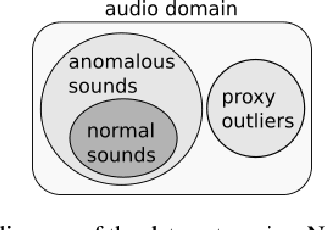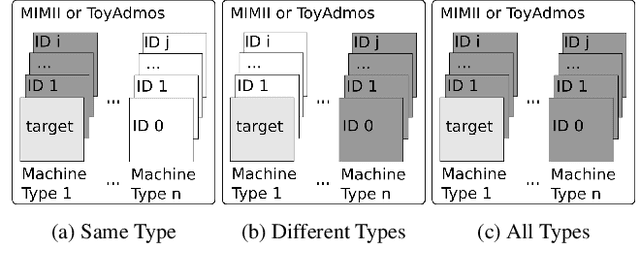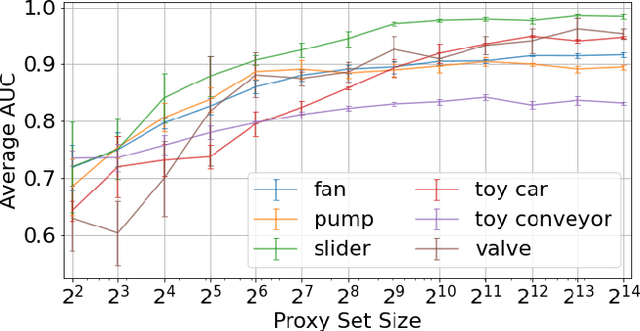Patrick Praher
Anomalous Sound Detection as a Simple Binary Classification Problem with Careful Selection of Proxy Outlier Examples
Nov 05, 2020



Abstract:Unsupervised anomalous sound detection is concerned with identifying sounds that deviate from what is defined as 'normal', without explicitly specifying the types of anomalies. A significant obstacle is the diversity and rareness of outliers, which typically prevent us from collecting a representative set of anomalous sounds. As a consequence, most anomaly detection methods use unsupervised rather than supervised machine learning methods. Nevertheless, we will show that anomalous sound detection can be effectively framed as a supervised classification problem if the set of anomalous samples is carefully substituted with what we call proxy outliers. Candidates for proxy outliers are available in abundance as they potentially include all recordings that are neither normal nor abnormal sounds. We experiment with the machine condition monitoring data set of the 2020's DCASE Challenge and find proxy outliers with matching recording conditions and high similarity to the target sounds particularly informative. If no data with similar sounds and matching recording conditions is available, data sets with a larger diversity in these two dimensions are preferable. Our models based on supervised training with proxy outliers achieved rank three in Task 2 of the DCASE2020 Challenge.
 Add to Chrome
Add to Chrome Add to Firefox
Add to Firefox Add to Edge
Add to Edge